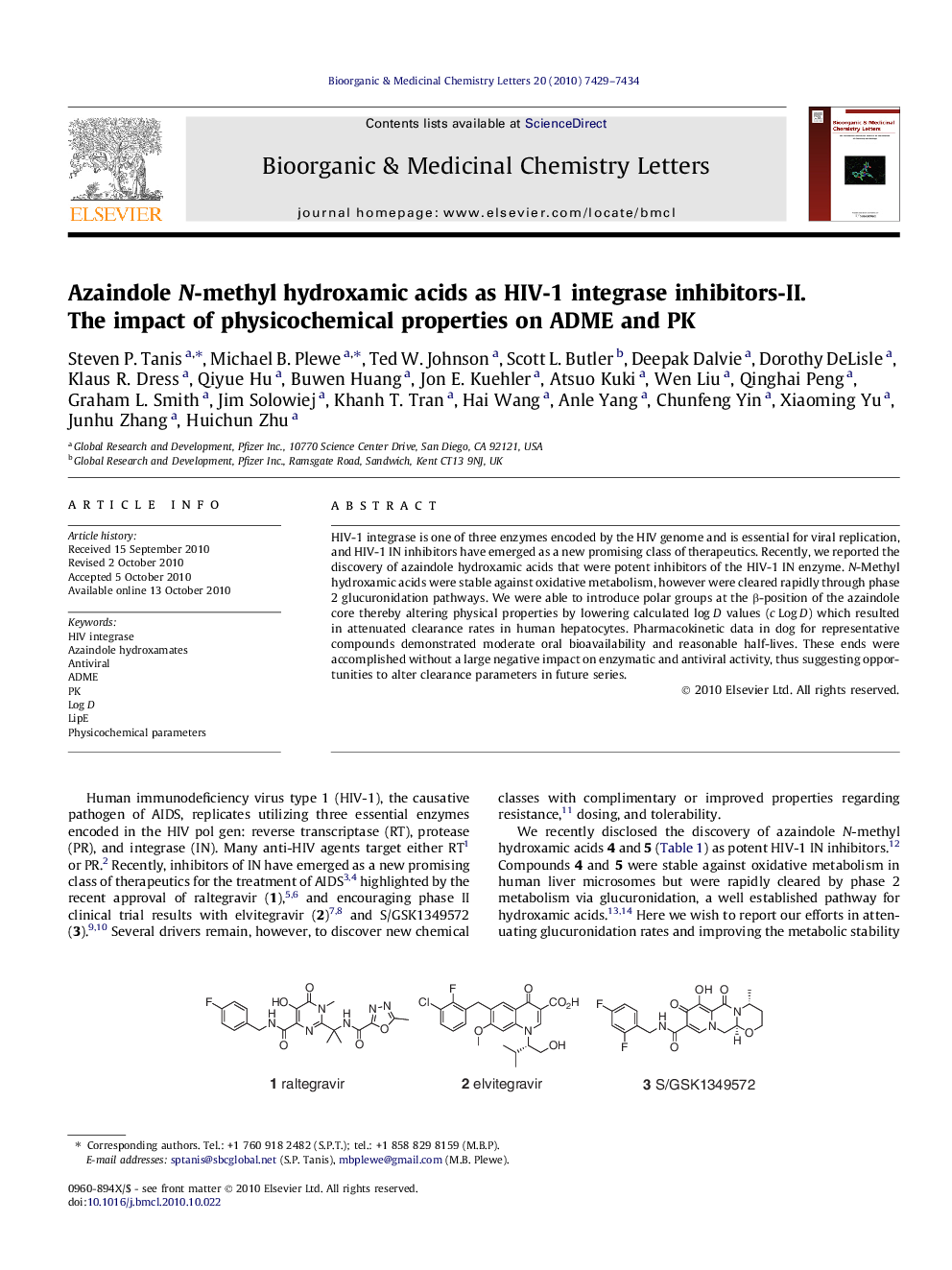| Article ID | Journal | Published Year | Pages | File Type |
|---|---|---|---|---|
| 1373412 | Bioorganic & Medicinal Chemistry Letters | 2010 | 6 Pages |
HIV-1 integrase is one of three enzymes encoded by the HIV genome and is essential for viral replication, and HIV-1 IN inhibitors have emerged as a new promising class of therapeutics. Recently, we reported the discovery of azaindole hydroxamic acids that were potent inhibitors of the HIV-1 IN enzyme. N-Methyl hydroxamic acids were stable against oxidative metabolism, however were cleared rapidly through phase 2 glucuronidation pathways. We were able to introduce polar groups at the β-position of the azaindole core thereby altering physical properties by lowering calculated log D values (c Log D) which resulted in attenuated clearance rates in human hepatocytes. Pharmacokinetic data in dog for representative compounds demonstrated moderate oral bioavailability and reasonable half-lives. These ends were accomplished without a large negative impact on enzymatic and antiviral activity, thus suggesting opportunities to alter clearance parameters in future series.
Graphical abstractFigure optionsDownload full-size imageDownload as PowerPoint slide
